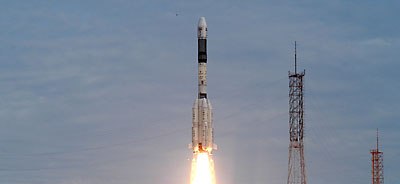
WASHINGTON (PTI): Indian-origin researchers have developed a new method that allows human waste in space to be converted into fuel that can be used to send future NASA spacecraft from the Moon back to Earth.
The process could also have applications on Earth, according to Pratap Pullammanappallil, a University of Florida associate professor of agricultural and biological engineering.
"It could be used on campus or around town, or anywhere, to convert waste into fuel," Pullammanappallil said.
In 2006, NASA began making plans to build an inhabited facility on the Moon's surface between 2019 and 2024. As part of NASA's Moon-base goal, the agency wanted to reduce the weight of spacecraft retuning to Earth.
Waste generated during spaceflight is stored in containers until it's loaded into space cargo vehicles that burn as they pass back through Earth's atmosphere.
For future long-term missions, though, it would be impractical to bring all the stored waste back to Earth.
Dumping it on the Moon's surface is not an option, so the space agency entered into an agreement with UF for ideas.
Pullammanappallil and then-graduate student Abhishek Dhoble accepted the challenge.
"We were trying to find out how much methane can be produced from uneaten food, food packaging and human waste," said Pullammanappallil.
"The idea was to see whether we could make enough fuel to launch rockets and not carry all the fuel and its weight from Earth for the return journey. Methane can be used to fuel the rockets. Enough methane can be produced to come back from the Moon," he said.
NASA started by supplying the UF scientists with a packaged form of chemically produced human waste that also included simulated food waste and packaging materials, Pullammanappallil said.
He and Dhoble, now a doctoral student at the University of Illinois, ran laboratory tests to find out how much methane could be produced from the waste and how quickly.
They found the process could produce 290 litres of methane per crew per day, all produced in a week, Pullammanappallil said.
Their results led to the creation of a process that uses an anaerobic digester. That process kills pathogens from human waste, and produces biogas - a mixture of methane and carbon dioxide.
In earth-bound applications, that fuel could be used for heating, electricity generation or transportation.
Additionally, the digester process breaks down organic matter from human waste. The process also would produce about 200 gallons of non-potable water annually from all the waste.
Through electrolysis, the water can then be split into hydrogen and oxygen, and the astronauts can breathe oxygen as a back-up system.
The study was published in the journal Advances in Space Research.
 Previous Article
Previous Article Next Article
Next Article














The Indian Air Force, in its flight trials evaluation report submitted before the Defence Ministry l..
view articleAn insight into the Medium Multi-Role Combat Aircraft competition...
view articleSky enthusiasts can now spot the International Space Station (ISS) commanded by Indian-American astr..
view article